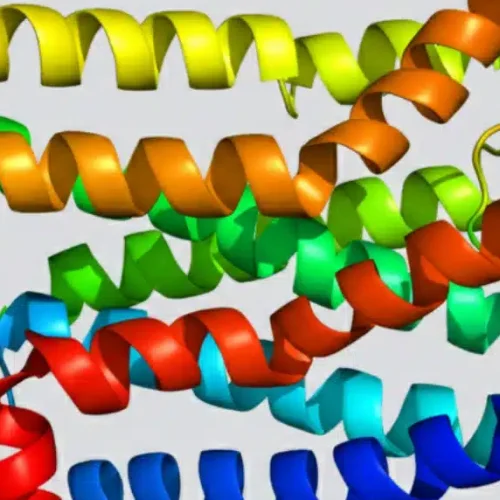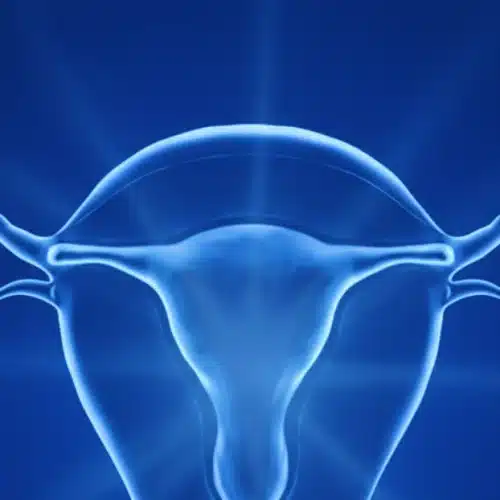Takeaways
- Rapamycin may delay menopause by preserving ovarian reserve through targeted mTOR pathway inhibition.
- Reproductive aging impacts whole-body health, with genetics linking menopause timing to systemic longevity.
- Clinical trials like NCT05836025 mark a shift toward preventive gynecology and future fertility optimization.
Why Menopause Timing Still Matters in Modern Longevity
The human lifespan has expanded significantly, yet the timing of menopause has remained largely unchanged. Women today often spend over a third of their lives in a postmenopausal state, exposing them to prolonged estrogen deficiency. This shift raises concerns about heart health, bone density, metabolic resilience, and cognitive function during those added years. Menopause doesn’t just mark the end of fertility—it initiates a cascade of systemic changes with lasting effects. Addressing ovarian aging has become an essential element in conversations about healthspan, not just reproductive planning. Longevity experts now see menopause delay as a strategic opportunity to extend quality of life and minimize the burden of age-related disease. According to the World Health Organization, global life expectancy for women now exceeds 73 years, making menopause timing more relevant than ever.
How the mTOR Pathway Drives Ovarian Aging
At the heart of this discussion lies a molecular pathway known as mTOR—short for mechanistic target of rapamycin. This cellular regulator senses nutrient availability and governs growth, proliferation, and survival. Within the ovaries, mTOR plays a pivotal role in the activation of dormant follicles. When this signaling remains unbalanced, it causes follicles to exit dormancy too early and too frequently, leading to premature depletion of the ovarian reserve. Accelerated activation depletes the total number of viable eggs, shortening the reproductive lifespan. Researchers now consider mTOR a central switch in ovarian senescence, linking nutrition, metabolism, and reproductive timing in a tightly coordinated dance. A recent preclinical study on rapamycin showed that inhibiting this pathway significantly preserved the ovarian reserve and prevented DNA damage in maturing follicles.
Rapamycin’s Origins and Why It’s a Unique Candidate for Reproductive Longevity
Rapamycin was originally developed as an antifungal compound but became better known as an immunosuppressant in organ transplant medicine. Over time, researchers recognized its ability to inhibit mTOR signaling and slow aging in animal models. Unlike newly developed pharmaceuticals, rapamycin arrives with a long-established safety record in humans, including defined dose-response curves and side effect profiles. Preclinical studies in mice revealed that short-term rapamycin administration can restore follicular structure and extend fertility windows, even after ovarian injury. In chemotherapy-exposed rodents, rapamycin reduced DNA damage in ovarian cells and preserved overall function. The ability to repurpose this compound for women’s reproductive health offers a faster regulatory pathway compared to launching a drug from scratch. Unlike hormone therapies that replace lost estrogen, rapamycin aims to preserve the biological foundation before depletion begins.
Inside the First Human Trial: What NCT05836025 Is Designed to Prove
Researchers recently launched a groundbreaking study under the trial identifier NCT05836025. This trial focuses on perimenopausal women and explores whether rapamycin can delay ovarian aging by modulating mTOR. Participants receive a structured dosing protocol and undergo tracking of oocyte quality, hormone levels, and cycle regularity. The central hypothesis suggests that rapamycin will stabilize ovarian function and extend the premenopausal phase. This trial will provide critical insight into whether findings in mice translate effectively to human biology. If successful, it would mark a historic shift in menopause management—from symptom relief after the fact to preserving reproductive potential proactively. A compound with decades of clinical use may soon redefine what’s possible for midlife women.
Beyond the Ovary: What Reproductive Aging Reveals About Whole-Body Healthspan
The ovaries are more than reproductive organs; they influence everything from cardiovascular function to bone remodeling and immune response. Genome-wide studies have identified shared genetic markers between early menopause and shortened lifespan. One such gene, HELB, governs DNA repair and is expressed broadly across human tissue. These findings confirm that ovarian aging is not isolated—it reflects systemic aging trends. Men and women alike show signs of accelerated aging when genes linked to early menopause become dysregulated. By preserving ovarian function, we may also slow biological aging throughout the body. A landmark Nature Genetics review outlined how ovarian aging intersects with cellular maintenance pathways affecting multiple organ systems.
Potential Combinations: Rapamycin Plus Senolytics or Hormonal Support?
Emerging strategies suggest rapamycin may work even better when paired with complementary interventions. Senolytics like Navitoclax target aging cells that accumulate and disrupt tissue function over time. In the ovary, these drugs may clear senescent stromal or granulosa cells that hinder follicular development. Using rapamycin to preserve the reserve and senolytics to clean the cellular environment could form a dual-action approach. Timing matters—preventive use during perimenopause may differ in outcome from use after menopause begins. Hormonal support may still play a role, especially in preserving systemic health. The most effective path may combine mTOR modulation, senescent cell clearance, and tailored hormonal balancing based on patient history and biomarkers.
Multiple approaches exist for influencing the onset or impact of menopause, ranging from traditional hormonal therapies to novel molecular interventions. The table below compares these strategies by mode of action, timing, and current level of clinical readiness.
| Intervention Type | Mechanism of Action | Stage of Use | Delivery Method | Scientific Maturity |
|---|---|---|---|---|
| Rapamycin (mTOR Inhibitor) | Delays follicle recruitment by inhibiting mTOR signaling | Perimenopause | Oral or weekly pill | Human pilot trial underway |
| Senolytics (e.g., Navitoclax) | Clears senescent cells that impair ovarian tissue function | Perimenopause or postmenopause | Oral or injection (varies by compound) | Preclinical or early-phase studies |
| Traditional HRT | Replaces declining estrogen and progesterone levels | Postmenopause | Transdermal, oral, vaginal | Clinically established |
| Lifestyle Modulation (e.g., fasting, exercise) | Indirect mTOR modulation and improved metabolic resilience | All life stages | Dietary and behavioral changes | Supported by observational and animal studies |
Risks and Unknowns: Where the Science Is Still Catching Up
Though promising, rapamycin for healthy women raises several open questions. Long-term immune modulation could pose risks, especially in individuals with latent infections or metabolic vulnerabilities. Fertility planning also becomes complex. Should a woman delay pregnancy based on extended ovarian function, or should she treat this as a preservation tool only? Clinical researchers must also address variations in response based on age, baseline egg count, and genetic predisposition. No current data exist for repeated cycles of rapamycin use in non-diseased women. Understanding how this therapy interacts with natural hormone rhythms, lifestyle habits, and concurrent medications remains an active area of investigation.
Questions? Our women’s health team stays updated on every major advancement in age-delaying gynecology. Call us at 239-355-3294 to speak with a specialist.
3 Practical Tips for Women Curious About Ovarian Geroprotection
- Ask your healthcare provider to measure Anti-Müllerian Hormone (AMH) and conduct an antral follicle count (AFC) via ultrasound. These markers provide a snapshot of your current ovarian reserve and help establish a baseline for future decisions.
- In everyday life, consider practices that influence the mTOR pathway, such as intermittent fasting or protein moderation. These behavioral shifts offer a non-pharmacologic way to reduce mTOR activation and support cellular resilience.
- Finally, stay informed about the outcomes of NCT05836025 and related studies. When new findings emerge, timely knowledge will help you weigh your options before the window for intervention closes.
How Rapamycin Fits Into the Future of Female Health Optimization
This new approach marks a turning point in the way we address menopause and aging. Rather than waiting for hormone levels to fall, physicians may soon focus on preserving the ovarian environment before senescence begins. That shift moves care upstream and enables better personalization for each woman. Integrating rapamycin with wearable hormone sensors—like those under development for real-time estradiol tracking—creates a closed-loop system that could revolutionize hormonal support. It’s no longer science fiction to imagine a world where women delay menopause, maintain better metabolic control, and navigate midlife with greater stability. Clinics like Fountain of Youth SWFL are already preparing for this next chapter by training staff, evaluating protocols, and staying engaged with clinical trial data from leading institutions. These investments help ensure we offer real-time guidance as evidence matures.
Need expert support for your long-term wellness strategy? Our team at 239-355-3294 is always available to answer questions and help you make informed decisions.
FAQ: What Women Are Asking About Rapamycin and Menopause Prevention
Is Rapamycin approved for delaying menopause?
No. It is currently being studied for this use in human trials, but approval has not been granted yet.
Can Rapamycin help if I’m already menopausal?
The current research focuses on women in perimenopause. Once menopause is complete, benefits may not apply.
What are the side effects of Rapamycin in healthy users?
Side effects can include immune suppression and lipid changes. Dosing protocols in healthy women are still under review.
How is this different from taking hormones?
Hormone therapy replaces lost estrogen. Rapamycin aims to delay that loss by preserving the ovary itself.
Will I need a prescription if it becomes viable?
Yes. If approved for this purpose, it will be available by prescription and require physician oversight.
Medical review: Reviewed by Dr. Keith Lafferty MD, Medical Director at Fountain of Youth SWFL on November 1, 2025. Fact-checked against government and academic sources; see in-text citations. This page follows our Medical Review & Sourcing Policy and undergoes updates at least every six months. Last updated November 1, 2025.





